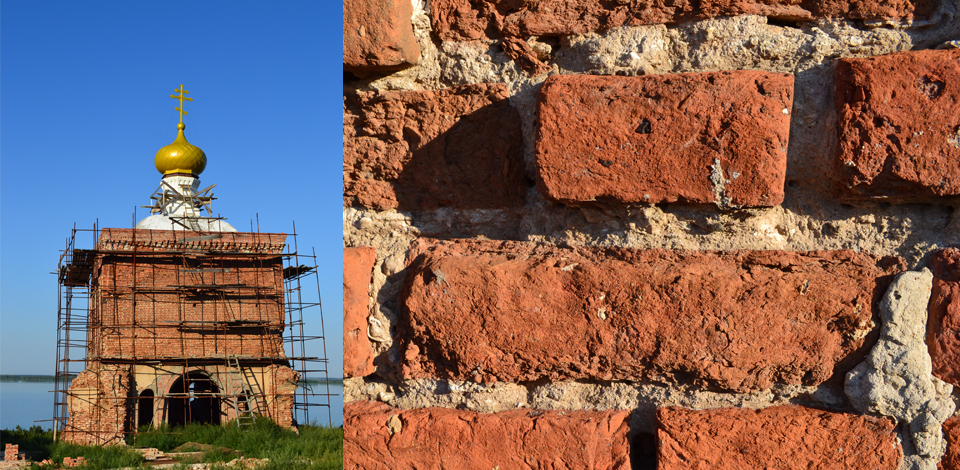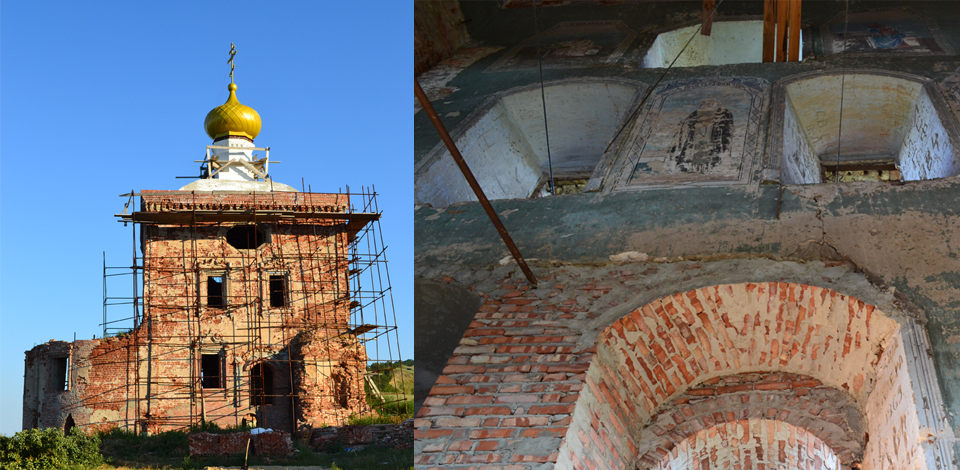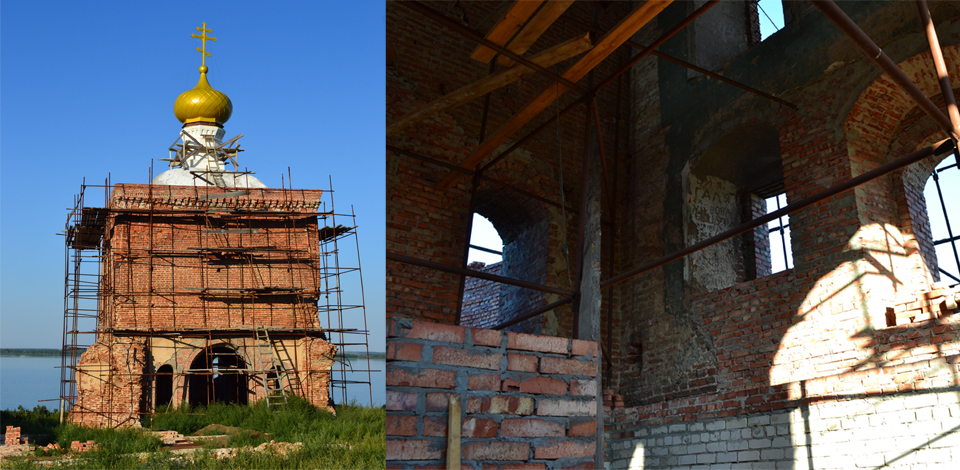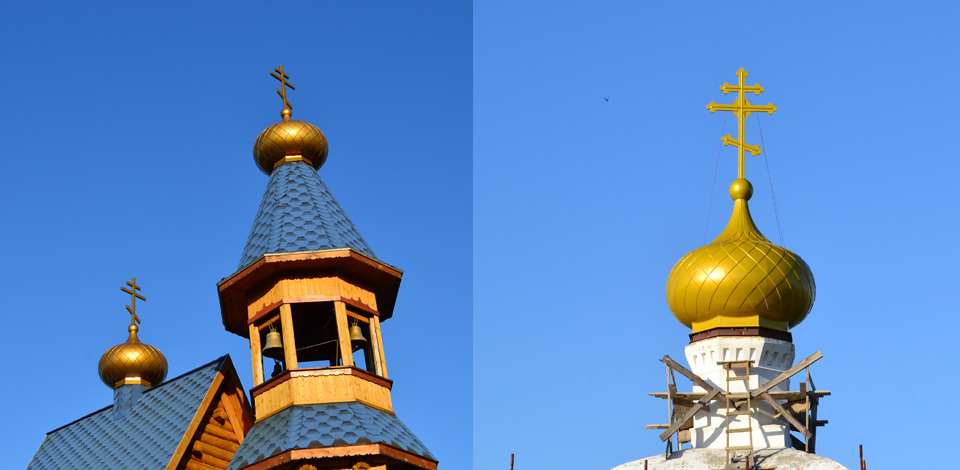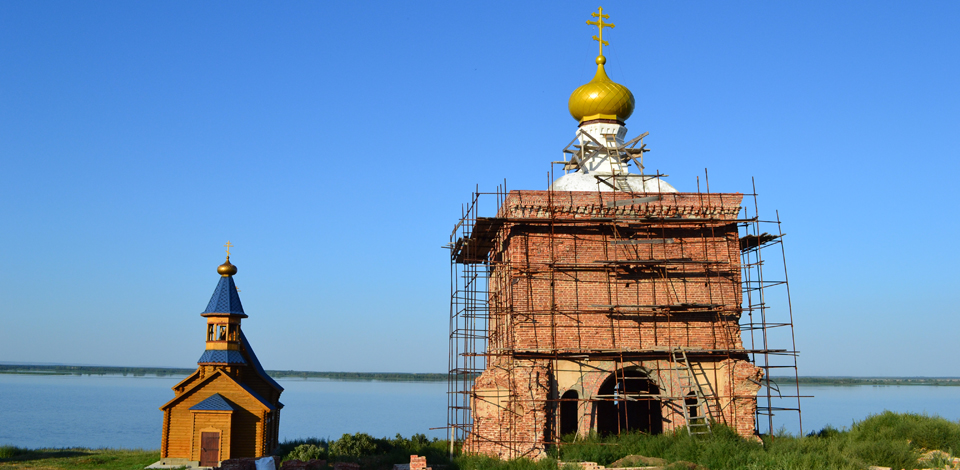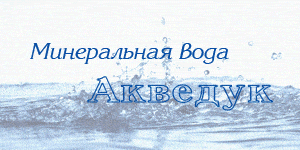Restoration of the monastery
Kashpirsky Simeonovsky Blagoveschensky monastery was found in 1712 году. The construction place was really fantastic: there were green hills, covered by flowers from three sides, and from the fourth side — vast Volga river.
In 1711 Semen Konstantinovich Dmitriev built a parish church for the sake of the Feast of the Annunciation on his ground. A father of Semen Dmitriev served in czarist days of Alexey Mikhailovich, Fedor Ioannovich, Ioann and Petr Alexeevich. On paternal line S. К. Dmitriev was a great-grandfather of I.I. Dmitriev, the writer and minister of justice, and on stepmother line — he was a historiographer of N. M. Karamzin. In 1712 he changed his intensions and found Blagoveschensky monastery near the church. Instead of the first wooden church he has built a stone one for the sake of the Feast of the Annunciation with chapels of the God’s Epiphany (that is why sometimes the monastery was written as Kashpirsky Epiphany) and St. Ioann the Theologian. Around the monastery there was a stone wall 154 meters long. On the wall above the saint gates – a stone bell-tower, without a dome, with four bells. Near the monastery there was a cattle yard with one horse and two cows, a grain barn.
The monastery had four wood fraternal monastic cells, located in cherry and apple gardens, and one monastic cell of Father Superior. At that time Father Superior was a hegumen, but later it was a monk-priest Ippolit (1758), a monk-priest Amvrosy (1761-1764). Several bonds worked to provide a livelihood for religious men. They lived outside the monastic gates in the village. There were 10 peasant households with 17 residents. They cut the ground, seeded and gathered the corn, made hay, prepared firewood on 100 carts per year. All that was subject to quitrent payment.
In the second half of the twentieth century the Cathedral building was destroyed, only walls and roof and a part of late painting are kept partially up to our times.
In 2006 with the blessing of Samara and Syzran Archbishop of Sergius, His Grace, renovation of the historical and cultural monument of Kashpirsky Simeonovsky Blagoveschensky monastery has been initiated. In 2007 for monastery renovation the preliminary works were conducted, rubbish after the Cathedral destruction was disposed, the documentation was agreed. In October, 2006 the Ministry of Cultural Affairs and Youth Policy of Samara region issued a plan (renovation) task No. 24-06/236 to develop scientific and project documentation and perform repair and renovation works. In the same year Syzran District Branch State Unitary Enterprise, Technical Inventory Center manufactured and issued a technical passport. The Volga region Administration of Federal Service for Supervision of Compliance with Legislation in Mass Communication and Culture Protection (Russian Commission of Culture Preservation) has issued Permission No. 121 for performance of works on preservation of cultural heritage objects.
In 2007-2008 a wood chapel was built next to the destroyed brick building of the Cathedral. Later there were other buildings built on the near-by territory. The bells, casted under the special order, were delivered from Voronezh. By that time LLC “Leader-Tuning” has manufactured glass-fiber plastic domes and crosses. These domes, crosses and bells consecration occured in June 19, 2008, then they were installed. LLC “Levsha” has manufactured forged candlesticks, chandeliers, interior design elements for the Cathedral. In 2008 the painters from Saratov led by the well-known icon painter Igor Shimakin erected an iconostas in the new Cathedral.
Nowadays the Cathedral construction is continued, finishing works of bell tower, monastic cells and refectory (there is a food storage on its first floor), hospice of five rooms, bishopric house and bath-house are carried out. A little farther from main buildings there is the territory, designed for the construction of monastic hot-house, vegetable store cellar, apiary house (heat-insulated room for bee hibernation) and font. In future it is planned to fence the whole monastery, church shop, entry gates, to arrange a churchyard, to lay on electricity, to make mooring on Volga river bank so that large and small ships can stop by Blagoveschensky monastery as it was before.

